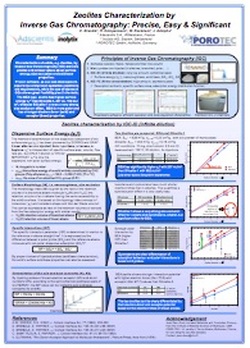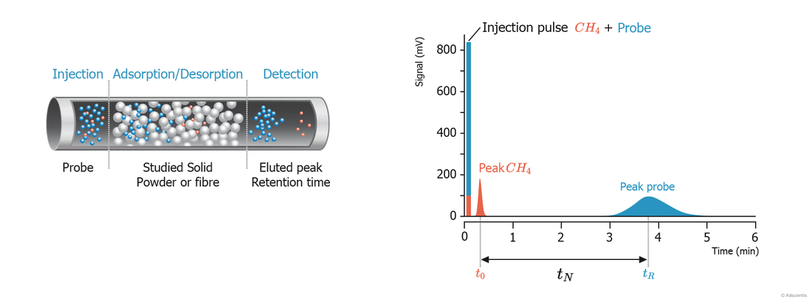IGC - Inverse Gas Chromatography
IGC in a nutshell
Category:
physical characterization of solid surfaces
Information about:
surface energy of solids
Addition information:
dispersive component of surface energy, acid-base properties, Tg (glass transition temperature) of polymer films, adsorption isotherms, morphology indices (nano-roughness)
Measurements on:
powders, fibers, sheets
Experience level:
very high. Established technology and instruments
Experience level:
dedicated laboratory and experienced key person with 15 years experience initially during PhD
Application fields:
Alternatives:
Contact angle methods. Difficult for particles and fibers since flat surface is required and pressed samples behave differently. Alternatively, Washburn method capillary rise) may be used, but accuracy is low.
Service-Provider
For the IGC method we are collaborating exclusively with Adscienties, France.
Description in Wikipedia:
http://en.wikipedia.org/wiki/Inverse_gas_chromatography
physical characterization of solid surfaces
Information about:
surface energy of solids
Addition information:
dispersive component of surface energy, acid-base properties, Tg (glass transition temperature) of polymer films, adsorption isotherms, morphology indices (nano-roughness)
Measurements on:
powders, fibers, sheets
Experience level:
very high. Established technology and instruments
Experience level:
dedicated laboratory and experienced key person with 15 years experience initially during PhD
Application fields:
- Nano-materials: carbon nanotubes, nano-clays, nano-silicas, use in composite materials
- Pharmaceuticals: polymorph characterization, drug-carrier interaction for dry powder formulation, triboelectric charging, differentiate crystalline/amorphous phases
- Fibers: textiles, natural fibers, glass fibers, carbon fibers, fibers in composites, explain via adhesion and cohesion
- Polymer particles: polymer films, beads and powders
- Others: paper-toner adhesion, wood composites, porous materials, food materials
Alternatives:
Contact angle methods. Difficult for particles and fibers since flat surface is required and pressed samples behave differently. Alternatively, Washburn method capillary rise) may be used, but accuracy is low.
Service-Provider
For the IGC method we are collaborating exclusively with Adscienties, France.
Description in Wikipedia:
http://en.wikipedia.org/wiki/Inverse_gas_chromatography
Our Partner Adscientis developed a new instrument for measurements of IGC (see video):
Contact us for further details or an offer for your case.

IGC and Zelolithes
This poster shows how IGC can be applied to zelolithes.
This poster shows how IGC can be applied to zelolithes.


